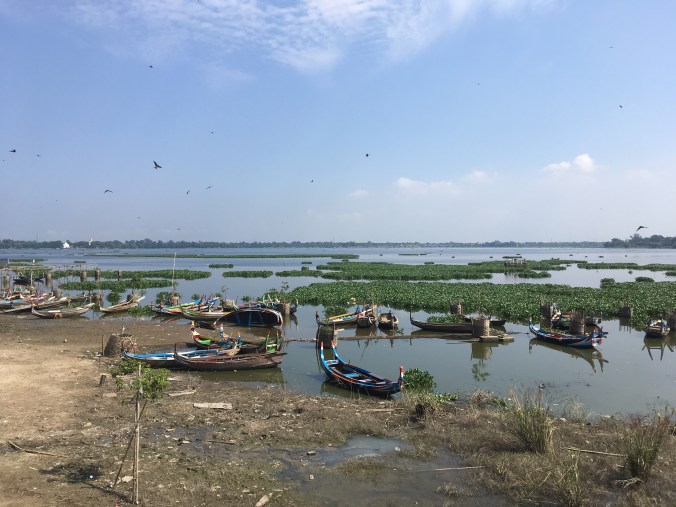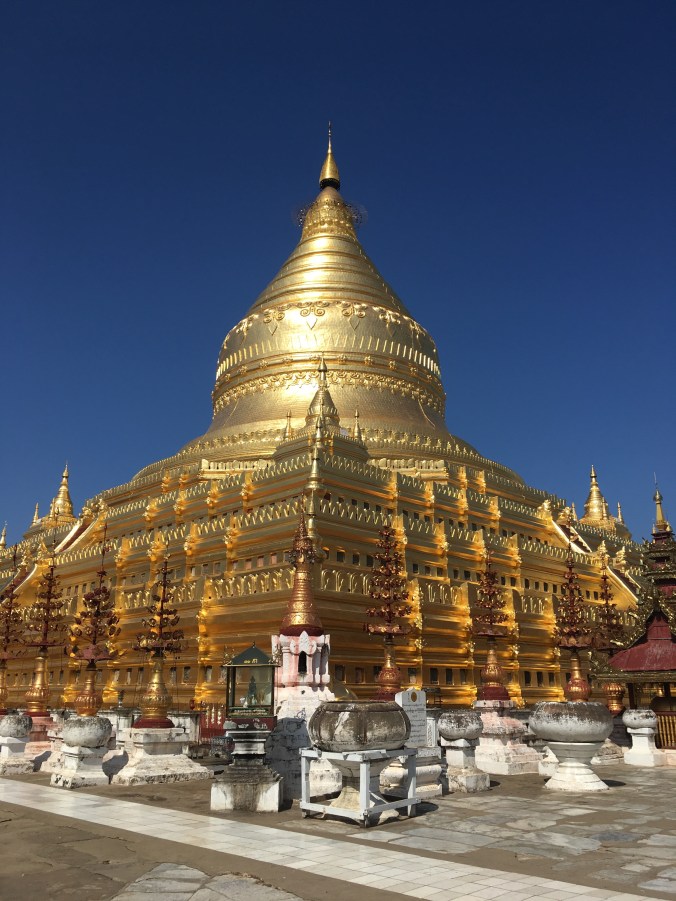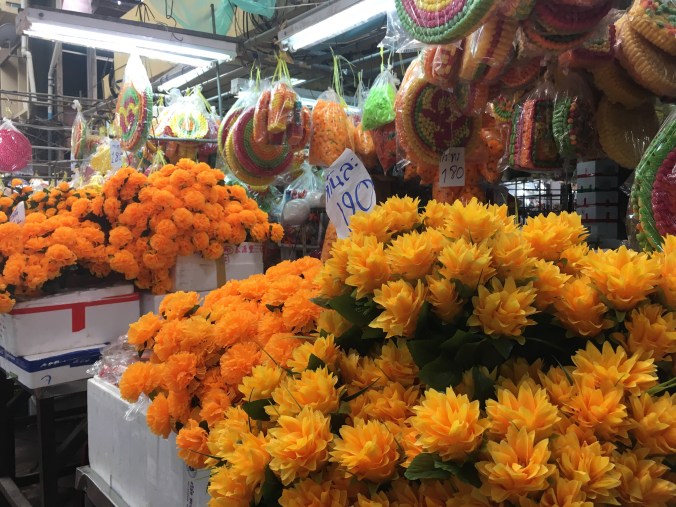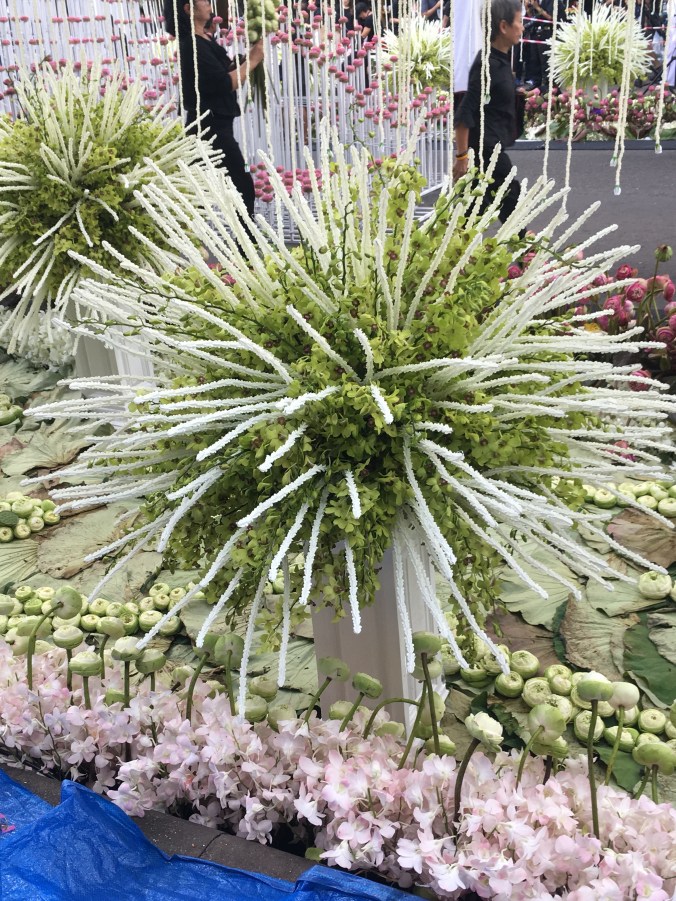Myanmar has a wealth of natural resources, gold, gas, rubies and teak. As Burma it was the second richest country in the whole of South East Asia with the best educated population. Now it is the poorest and least developed following the departure of the British in 1948 and subsequent internal political and ethic strife culminating in the military coup of 1962 which lead to the country being closed to the rest of the world.
Myanmar is one of the largest producers of teak. This resource was plundered under the British (we apologised) and more recently by the Chinese. Teak was used extensively in building the royal palaces. Unfortunately fire has ravaged most of the wooden structures and only a couple of buildings remain. These were given over to monasteries following the deposing of the king but now are open to tourists. In their heyday both the inside and the outside were completely covered with gold but now only some of the interior pillars remain as an indication of the former glory. The intricate carvings on the roof and doors are testament to the craftsmanship of the country.
One palace is a functioning monastery and in what was formerly the King’s room a monastic school takes place. A far cry from the UK or Thailand.
Teak is a very slow-growing but hard wearing wood and was used to build a bridge crossing the Amarpura Lake in Mandalay. With over 1000 pillars this is the world’s longest teak bridge.

it was a hot walk across but the views it afforded were stunning, This was the rural south east Asia of our imaginings. This is how people have lived and worked for thousands of years.


 j
j
and just to prove that we WERE there…
 I was fascinated to hear that we were going to be taken to visit the world’s largest book as defined by the Guinness Book of Records. The librarian in me was intrigued… This turned out to be Buddhist scriptures, the tipitaka, inscribed on slabs with writing on each side.
I was fascinated to hear that we were going to be taken to visit the world’s largest book as defined by the Guinness Book of Records. The librarian in me was intrigued… This turned out to be Buddhist scriptures, the tipitaka, inscribed on slabs with writing on each side.

There are 730 of these tablets at the Kuthodaw Pagoda and each one has its own little house. The site is vast. If these ‘pages’ were placed on top of each other then it would be as high as a 26 storey skyscraper!!! This has got to be the ‘anti-kindle’!

When the tablets were unveiled in 1868 each line of writing had been filled with gold ink and the slabs were decorated with rubies and diamonds. unfortunately in the mid 1880s the British looted the temple and stripped the stones of their precious gems (shame) but the British soldiers left the texts behind as they did not understand the cultural value (fortunately). The writing has been re-filled with black ink so the opulent glory may have disappeared but the message remains.

As you can probably gather gold is extremely prevalent in this country. 85% of the gold mined here is used for religious purposes. This picture here shows a statue which you can add a gold leaf to (for a sum), well only men can! Adding some gold earns you merit so many people do it and the statue is getting fatter and fatter..

The gold is beaten by hand in a long and laborious process which involves several stages, one of which has 5 hours of constant beating!

The women put the gold between sheets of bamboo for each stage. You can see here that one woman has yellow on her cheeks. This was quite common and is a form of sun block. It is a tree root which they grind to a powder then mix with water to form a paste.

Women only were allowed the job of polishing the Buddha statues by hand as their touch is more delicate to get a smooth finish

Puppets are popular in South East Asia as a way of re-telling the traditional tales. The craftsmanship which goes into the making of them was remarkable and the puppeteers were highly skilled. I don’t think that I have seen a marionette style show since I watched Andy Pandy but we enjoyed the performance whilst we ate our evening meal.
No blog about Myanmar would be complete without a brief comment on the Rohingya issue. We spoke to several people about this and overwhelmingly the perception on the ground is that it is radical Islamic fundamentalists who have been stirring up trouble. The Rohingya are Bengali immigrants from Bangladesh who began arriving in the neighbouring Rakhine state 1940s but many of them are in the country illegally. The local Rakhines have accepted and tolerated them but recently tensions have grown. There have been incidences of Buddhist women being raped, temples and shrines being burned and other provocations by the Rohinynga towards the local indigenous population. It is widely believed that ISIS are attempting to establishing a 4th Caliphate in the region which is why the army have reacted to forcefully in expelling the troublemakers but also the illegal immigrants. This side of the story is perhaps not so well portrayed in the media. We were perfectly safe as the area where the troubles are is remote (which is why ISIS wanted to use it I suspect) and foreigners would not be allowed to travel anywhere near there, which is a shame as I understand that there is a beautiful beach there.
This country was an unexpected delight. A hidden gem and I would encourage as many people as possible to visit before it gets over run with commercialism. It is a cultural, historical and architectural delight. And if anyone is interested in visiting I have the details of a tour guide who can arrange everything at a reasonable price. We had a car and an English speaking tour guide for each day. The tour guide cost $40 per day and was worth every penny. We were looked after, taken to every location and learned so much from our conversations. If you are not in a large group then that is the best way to see the country.
To finish here are some of our memories…











































































